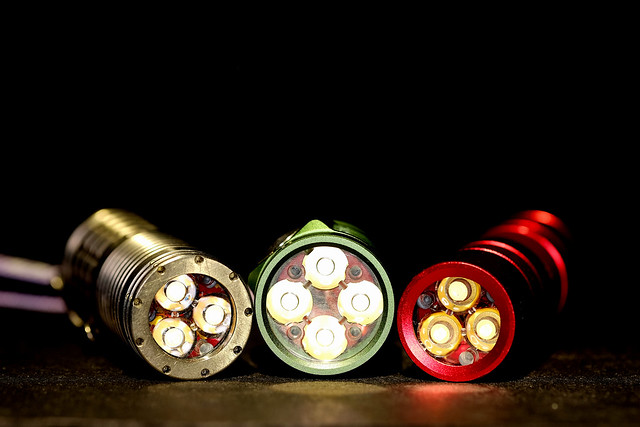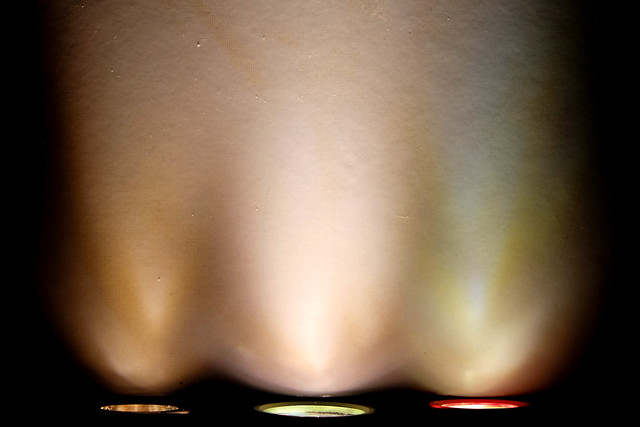
219C 4000K 9050、219B 4500K 9080、XP-G3 5000K 90??


219C 4000K 9050、219B 4500K 9080、XP-G3 5000K 90??

Yes, thanks for inquiring about it. ![]() So the a/b/c/d/e/f can only be offered with r9050 in the 7-step?
So the a/b/c/d/e/f can only be offered with r9050 in the 7-step?
You have 7 tint options only for 5 steps and 7 steps. In this 5000K case the available options are:
- sm503
- sm505 (base order), sm505a, sm505b, sm505c, sm505d, sm505e, sm505f

- Clemence
Clemance, please help me out here… wouldn’t one want an SMxx3 for the tightest tint range control? I am not sure understand the concept of the steps. I have learned over time where I like my tints to be in relation the BBL line. For example, I like Cree 4C much more than Cree 4A. But I love the 219B 4000k and 4500k 9080 tint, I think it is the extra red in the spectrum that I like.
Clemance, please help me out here… wouldn’t one want an SMxx3 for the tightest tint range control? I am not sure understand the concept of the steps. I have learned over time where I like my tints to be in relation the BBL line. For example, I like Cree 4C much more than Cree 4A. But I love the 219B 4000k and 4500k 9080 tint, I think it is the extra red in the spectrum that I like.
I’m not an expert in this subject but I’ll try to explain what I understood.
3, 5, and 7 steps Macadam binning had been used for almost all white Nichia LEDs until last year, the 757 and recently cool white E21A adopted 5abcdef and 7abcdef binning. The 3 steps and 2 steps (used by some Lumileds and Citizen variants) are currently the tightest Macadam binning used. Although Cree’s own binning chart is the tightest in my opinion.
As for 219C, currently 3 steps Macadam is the tightest bin with the least variation in both tint and CCT. But the cooler the CCT the larger the ellipse and they’re gradually move higher up leaving the BBL line. The 219B sw45k got so much love for it’s rosy below BBL tint. About 2 weeks ago, K-Wong made me notice the change in 219C’s binning from simple 3,5,and 7 steps to 3,5abcdef, and 7abcdef binning. Some people don’t mind with slight variation in CCT as long as they get rosy or at least green-free tint. K-Wong asked me if I could get some sample for the sm5070e or sm5070f (the farthest down below BBL). The answer was yes he could but with no future availability guarantee.
In my case, R9050 cost me extra 20% compared to Rnn/R70 and another 20% for sm503 compared to sm505. While the price for sm507, sm5070e, and sm5070f are all the same within the same CRI range. Thus getting us sm5070e/f means more work, more time, more reels. And perhaps….most of the sm507 occupants are mostly northern residents (remember the last batch of sm503 219C?). I saw a video about how Nichia does the binning, it took only a split seconds for each LED before directed to the destination reels. The more bins, the more reels and routes.
So this is probably a combination of impracticality and scarcity.
Correct me if I’m wrong,
Clemence
Thanks for the explanation Clemence, my vote goes for the sm4550e R9050 if I were to pick just one (doesn’t look like they do that with 3-step emitters but I could be mistaken). I do like the warmer rosier tint, which that should provide…The 4500k 219b R9080 seems to have sold out pretty quickly this batch
I bet the lions share of us here are close to agreeing that:
5050e
5070e
503
5050d
5070d
are the preferred tints.
for us NO GREEN snobs
I like this new binning style. I don’t mind my emitters drifting pretty far from the bbl if they do it in the red direction. Interesting that Nichia didn’t lay out their bins right along the bbl, so even the lower ones can be slightly above the line. Regardless, I’d be in for anything from D, E, F. No A, B, C’s for me. I wouldn’t order them.
Green is the enemy, down with green. As long as it doesn’t have green I am fairly open to anything between 4k and 5k. Ok, so maybe I am still a bit picky lol.
Green is the enemy, down with green. As long as it doesn’t have green I am fairly open to anything between 4k and 5k. Ok, so maybe I am still a bit picky lol.
I’d rather stay between 4000K and 4500K… You’re NOT picky :-p
(To say the truth, I chose emitter temperature according to host material… Alu will get 5000K, Ti/SS a bit less say 4000K-4500K, then comes copper and brass with 2700K-3500K)
I will admit that I have a strong soft spot for 4500k but I have seen both 4k and 5k that looks really good as well, it depends on where it falls on the BBL.
My current EDC is a triple with 3k, 5k and 5700k high CRI LED’s. The final tint is a thing of beauty. Only thing better is the 219B 9080 4500k that I have seen so far. Although the xp-G3’s put out almost 2x the lumens of my triple 219b.
I don’t understand why the center of the ellipse is off the blackbody line. Shouldn’t that be the target?
Anyway, I’m excited for any of the not-green options, with e being the most promising.
I agree, the specific bin doesn’t matter as long as it is d,e,f, with e being preferred if there is a choice
My question is, who the heck wants all these green LED’s they are making? What possible situation would that look good besides landscape lights?
I will admit that I have a strong soft spot for 4500k but I have seen both 4k and 5k that looks really good as well, it depends on where it falls on the BBL.
My current EDC is a triple with 3k, 5k and 5700k high CRI LED’s. The final tint is a thing of beauty. Only thing better is the 219B 9080 4500k that I have seen so far. Although the xp-G3’s put out almost 2x the lumens of my triple 219b.
I think best solution is to get the entire 219c range from 3000K-5700K in E binning. :+1:
My question is, who the heck wants all these green LED’s they are making? What possible situation would that look good besides landscape lights?
Or spend the bux on high-cri Neeches, and put ’em behind greenifying AR-coated glass.
as close as these are to bbl i doubt anyone could tell nor care.
unless you are a white wall hunter with one of each.then you would see the difference however small.
My question is, who the heck wants all these green LED’s they are making? What possible situation would that look good besides landscape lights?
In Indonesia, solar powered streetlights and wide area mining lights.
The designers and the users both don’t care about tint and CRI at all. Efficacy and CCT are the most dominant purchase factors. And usually, within the same CCT, those greenies are brighter.
I’ve seen chinese solar powered streetlights in Kalimantan (Borneo), each light seemed to use 100+ 3535 XPG/219C under Ledil-like strada optics. They use hundreds of these lights to lit the entire hard to reach sites.
Street lighting is the main 3535 LED market here.
- Clemence
Here in Southern Arizona USA there is a certain brand of gas station in whose pump island canopies are installed EXTREMELY green tinted LED fixtures. I’m thinking they’re so greenish that they may be using some version of LED optimized to be used with a pinkish type to achieve a balanced white in higher-CRI fixtures. And the reasons I can think of may be: lower cost per LED (I’m not sure if this is true or not) and/or the fact that greenish tints will have higher efficacy due to the greater proportion of highly-visible green light, all other things being equal. It seems this may be a common ploy with legacy lighting technologies as well, even for general illumination. In the past I would search for well-balanced daylight compact fluorescent bulbs (as compared tintwise to sunlight on a white surface) and most of them would have a greenish tint to one degree or another, even before they really warmed up. Very few appeared true to sunlight in terms of tint. But I’m sure this did allow the manufacturers to claim higher lumen and efficacy figures.
……And the reasons I can think of may be: lower cost per LED (I’m not sure if this is true or not) and/or the fact that greenish tints will have higher efficacy due to the greater proportion of highly-visible green light, all other things being equal. It seems this may be a common ploy with legacy lighting technologies as well, even for general illumination………
…remembering that in the majority of cases, human retinas are most sensitive to blueish-green light.